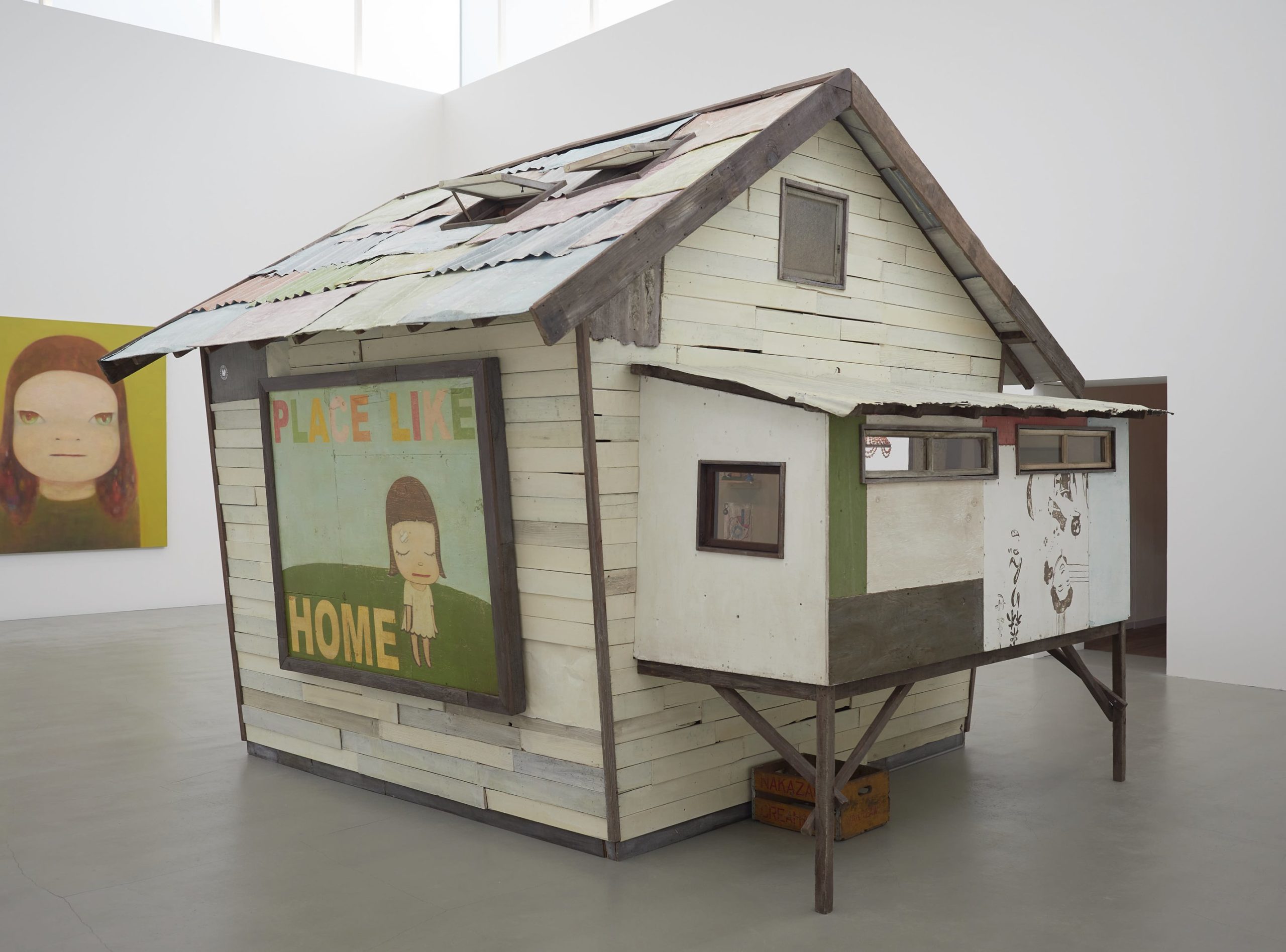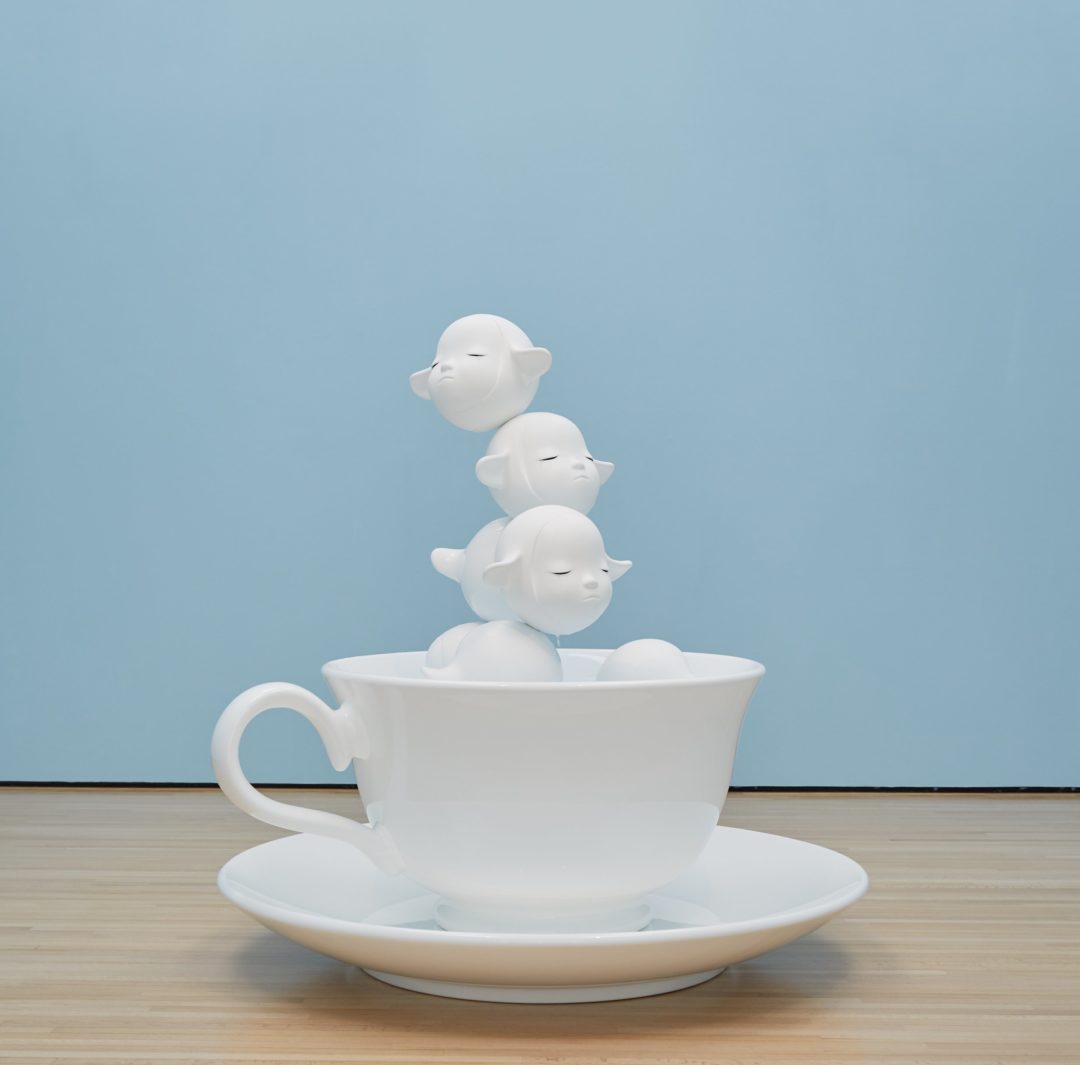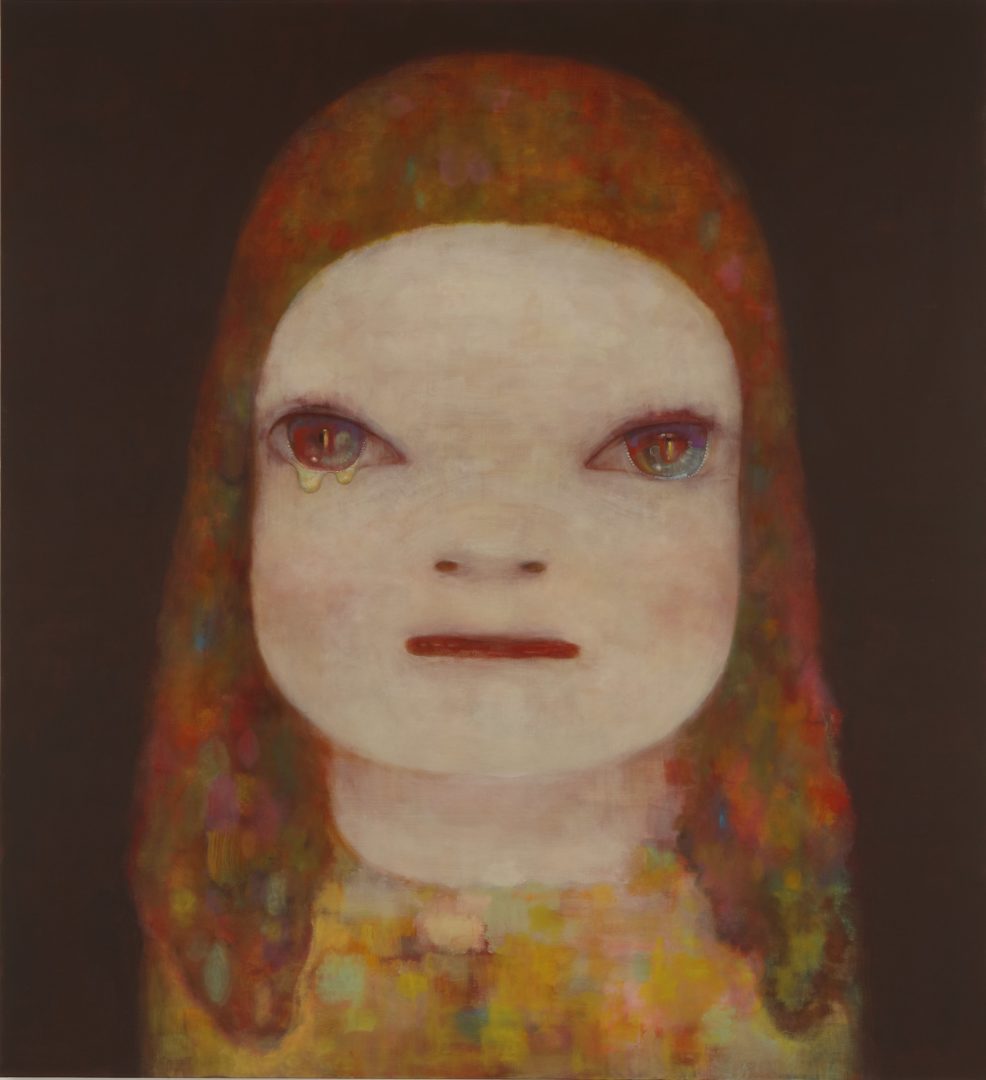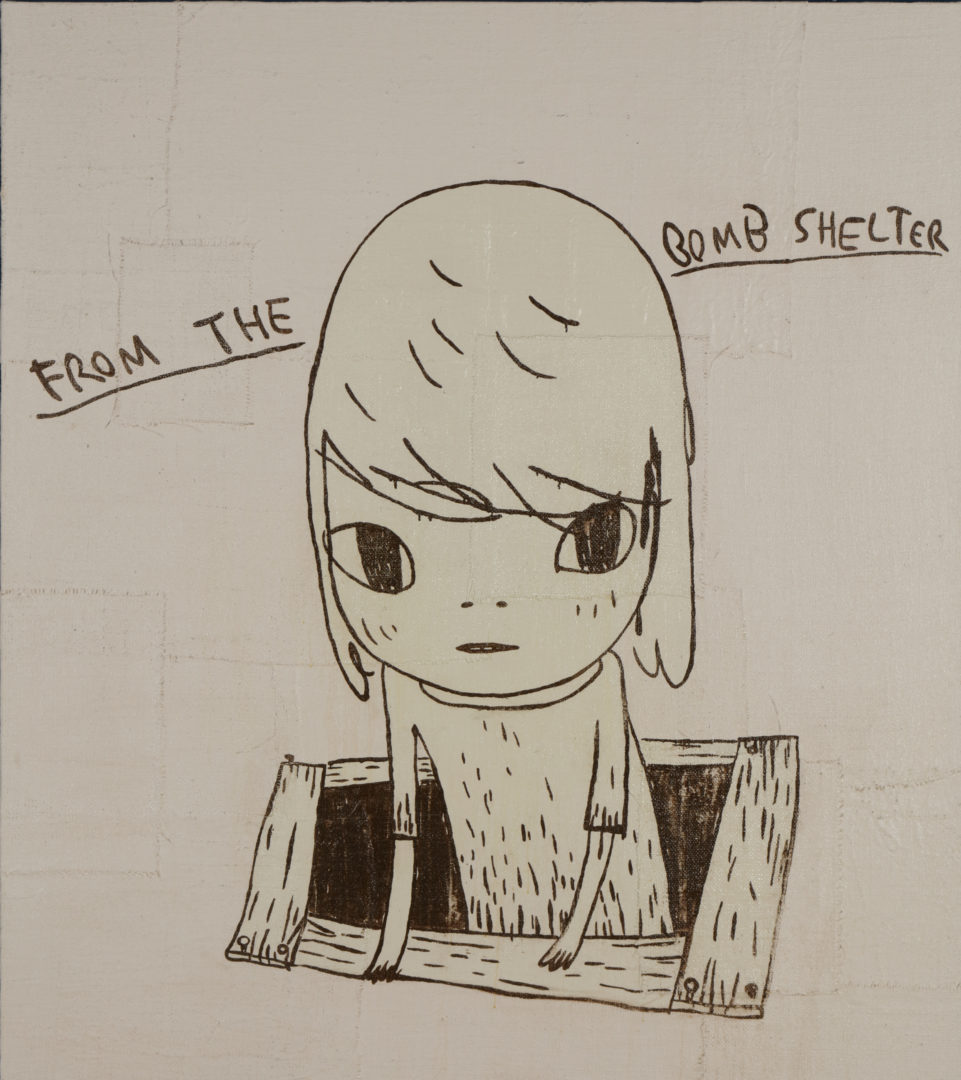Yoshitoro Nara at Guggenheim, Bilbao

Yoshitomo Nara, curator: Lucía Agirre
Guggenheim Bilbao, June 28 to November 3, 2024.
There are very few artists whose work is instantly recognisable, as if their style were powerful and unique enough to serve as their signature. At the age of sixty-four, Yoshitomo Nara is one of the leading figures in Japanese art, famous for his cartoon-like paintings, portraits of children with oversized heads and big eyes, sometimes threatening, sometimes provocative, insolent or melancholy, inevitably disturbing. The indefinite environment in which he places his characters allows them to free themselves from all temporal and spatial reference points. In Bilbao, the Guggenheim is paying tribute to his work with an unprecedented retrospective exhibition, the first of its scale in Europe, spanning forty years of artistic creation, from 1984 to the present day. His work is intrinsically linked to his own history and experiences. Human, animal, hybrid, the characters that populate it are all self-portraits, receptacles of his most intimate emotions and thoughts, drawn from memories of a solitary childhood in Japan, but also from time spent abroad, in that relatively familiar state of isolation that overtook him in Germany, not speaking the language. Her work is also informed by her knowledge of literature and music, the history of both Japanese and European art, and her insatiable curiosity and appetite for encounters and travel. The artist has always had a passion for underground folk, rock and punk music, from the protest songs of Bob Dylan to the melancholy notes of the Blues, which he approaches in a sensory way, not understanding the foreign-language lyrics. His work examines and integrates ideas around the concepts of home, community, nature and environment, and their interdependence. “Post-war Japan was characterised by economic growth. My parents worked and my two brothers are much older than me, so I spent all my time at home alone,” confides the artist. “I didn’t have much to do with them. It didn’t matter whether I rebelled or not; nobody would have known. They had no idea who I really was. I loved music and girls. I felt totally free… but also abandoned”, he admits.

Fontaine de vie (Fountain of Life), 2001/2014/2022
Laque et uréthane sur plastique renforcé de fibres, moteur et eau
175 Å~ 180 cm de diamètre
Collection de l’artiste
© Yoshitomo Nara, courtoisie de la Yoshitomo Nara Fondation
Yoshitomo Nara was born in 1959 into a working-class family living in the semi-rural suburb of Hirosaki, in northern Japan. On his first trip to Europe in February 1980, when he was twenty years old, Nara was overwhelmed by the discovery of paintings from the High Middle Ages and the Renaissance, a powerful experience that led to a revelation for him, broadening his knowledge of painting to include the Impressionists and Expressionists, and also taking an interest in the artists of the École de Paris. “After leaving Japan, I realised that seeing things from Mount Fuji and seeing things from Mount Everest are completely different,” he says. He made a second trip to Europe in 1983. After graduating from Aichi University of the Arts in 1987, he decided to move to Germany to continue his studies at the prestigious Kunstakademie in Düsseldorf from 1988 to 1993, joining the studio of the neo-expressionist painter A. R. Penck (1939-2017)(1), whose influence is quickly apparent in Nara’s formal approach and imagery, as can be seen in the painting “Make the Road, Follow the Road” dated 1990, which establishes a personal mythology. Penck encouraged him to paint on canvas as if he were drawing. He thus began a fascinating and unusual series of drawings executed in acrylic paint. Not speaking a word of German, Nara plunged back into a state of solitude that was nevertheless different from that of his childhood, as he himself explains: “The solitude I experienced in Germany was different from that which I had experienced in Japan. It was a solitude watched over by nothing and nobody. In the end, at the beginning I didn’t even speak the language”. The artist then realised the need to communicate through his art: “when I draw, those who try to understand me can cross the language barrier and begin to grasp my thoughts after contemplating my paintings. That’s why I draw every day, to achieve this understanding”. He moved to Cologne in 1994. The sale of his paintings soon made him independent, enabling him to devote himself entirely to his artistic production. During this seminal period, he began to synthesise popular Japanese and Western cultures, and in 1991, at the Kunstakademie’s annual student exhibition, he presented a painting that was to determine his style. In it we can see the beginnings of a unique pictorial language that he would develop over the next twelve years, before returning to Japan in 2000.
The exhibition focuses on thematic comparisons rather than a chronological sequence, with the aim of revealing who Nara is as an artist through an evocation of his practice and the issues that lie at the heart of his creative process, be they recurring motifs such as the puddle – “In the Deepest Puddle II” (1995) -, the house with the red roof or the forest, his evolving formal approach, or his varied techniques. The exhibition is an invitation to take a journey into the artist’s sensitive universe, a journey through four decades of visual creation that allows us to follow his stylistic development. Although he considers himself first and foremost a painter, Nara uses many different media, including drawing, sculpture and installation, as in his domestic environments, of which ‘Mon atelier de dessin’ (2008), an architectural structure in painted wood recreating the space of his studio, appears to be the culmination. Inside this ramshackle shack, with its multicoloured tin roof surrounded by piles of drawings rising from the floor, there is a desk containing figurines and CDs of music mixed by Nara himself. Vernacular paintings and objects, accumulated over the years, complete the décor.

Larmes de minuit (Midnight Tears), 2023
Acrylique sur toile
240,5 Å~ 220 cmCollection de l’artiste
© Yoshitomo Nara, courtoisie de la Yoshitomo Nara Fondation
The artist often places his disquieting adolescent characters in objects that take the form of boxes or houses symbolising shelter or protection, as in the case of “Too Young to Die” (2001), in which a young girl, rather irritated and smoking a cigarette, stands out against the pastel-blue background of a giant plate. This common everyday object, reminiscent of the tondo form so popular during the Italian Renaissance, enables him to create a safe place, as in his ‘Fountain of Life’, a monumental motorised sculpture in the shape of a traditional teacup, from which emerge several children’s heads wearing sheep’s ear bonnets. Water flows from their eyes into the cup like a fountain of tears, a continuous stream of sadness. Far from the fountain of youth promising eternal life, it is to an uncertain future, traversed by the torments of a life whose end is only known in advance, that the artist invites the visitor.
With this first major exhibition in a world-renowned museum, the Guggenheim is further establishing the reputation of Yoshitomo Nara, whose pop art has long been kept at arm’s length from international cultural institutions. If you look closely at the vast body of work assembled for the occasion, you soon realise that it is in fact an empathetic response to the people and places he has visited, and to the situations he has experienced up to now. The series of disasters that struck Japan on 11 March 2011 has had a lasting effect on the children of Nara. Hostility seems to have left their eyes, revealing a certain vulnerability. Some keep their eyes closed, like the little girl in “Dans le lac lacté / Celle qui pense” (2011), whose reflection cannot hide the infinite sadness on her face. Others cry, like the girl with wet eyes in the recent painting with the evocative title “Larmes de minuit (Midnight Tears)” (2023), or seem worried, like the little girl in “Sortant de l’abri antiaérien (From the Bomb Shelter)” (2017). Yoshitomo Nara has a phrase to describe an intimate vision that invites introspection and arouses deep emotion in the viewer: “Seeing with the eyes of the heart”. It also seems to aptly define his way of being in the world.
1 A. R. Penck is the pseudonym of Ralf Winkler. A German painter, engraver and sculptor, he developed his style in the 1970s, using mainly lines and graphic symbols reminiscent of cave paintings, Asian calligraphy and graffiti.

Sortant de l’abri antiaérien (From the Bomb Shelter), 2017
Acrylique sur jute montée sur bois
180,5 Å~ 160,5 cm
Collection de l’artiste
© Yoshitomo Nara, courtoisie de la Yoshitomo Nara Fondation
Head image : Yoshitomo Nara
Mon atelier de dessin, 2008, chambre comprise (My Drawing Room, 2008, Bedroom Included), 2008
Installation, techniques mixtes. 301,5 Å~ 375 Å~ 380 cm env. Collection de l’artiste © Yoshitomo Nara, courtoisie de la Yoshitomo Nara Fondation
- From the issue: 109
- Share: ,
- By the same author: Rafaela Lopez at Forum Meyrin, Banks Violette at BPS 22, Charleroi , Echos der Bruderländer à HKW, Berlin, Élodie Seguin at La BF15, Lyon, Jeff Wall at Fondation Beyeler, Bâle ,
Related articles
Ralph Lemon
by Caroline Ferreira
Ho Tzu Nyen
by Gabriela Anco
Hilma af Klint
by Patrice Joly

